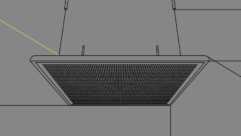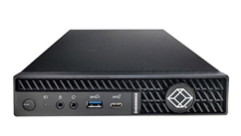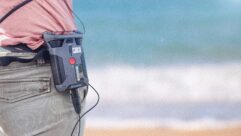NILES, IL., August 17, 2020—Shure, Inc. today announced that the Patent Trial and Appeal Board of the U.S. Patent and Trademark Office (“PTAB”) in its inter partes review of Shure’s U.S. Patent No. 9,565,493 (“’493 patent”) confirmed the patentability of several new amended patent claims in response to a challenge initiated by ClearOne. The ’493 patent protects the architecture of Shure’s award-winning MXA910 product line, offering powerful acoustic benefits with flexible mounting options.
“Shure is pleased with the PTAB’s decision, which recognizes and protects the technological innovations of our MXA910 products,” said Jim Schanz, Vice President of Global Sales, Integrated Systems at Shure. “Our focus is always on customers, and we have established a longstanding reputation for providing them with high-quality, reliable audio products that meet their changing needs. The PTAB’s findings recognize our extensive investment in intellectual property and reinforce Shure’s position at the forefront of innovation in the industry.”
On August 14, 2020, the PTAB recognized certain inventive and innovative aspects in Shure’s nested ring microphone design, confirming original patent claims 6 and 34 of the ’493 patent. Importantly, the PTAB also granted Shure eleven new amended claims for the ’493 patent that protect the structure and form factor of Shure’s MXA910 product line. Although the PTAB’s decision also found that other original claims of the ’493 patent are unpatentable, in granting these new amended claims, the PTAB confirmed the patentability of innovations embodied in Shure’s market-leading MXA910 products.
ClearOne’s challenges to Shure’s new amended claims were based in part on ClearOne’s own U.S. Patent No. 9,813,806 (“’806 patent”) and its published application. The PTAB found Shure’s new amended claims patentable over both of these ClearOne references, recognizing the conceptual differences between Shure’s inventive microphone array structure and ClearOne’s different approach in its ’806 patent and published application.
On July 18, 2019, Shure filed a lawsuit against ClearOne in the U.S. Court for the District of Delaware alleging that ClearOne’s BMA-CT products infringe Shure’s ’493 patent, and that ClearOne’s false and misleading marketplace communications constitute false advertising, tortious interference with business relations, unfair competition, and violate Delaware’s deceptive trade practices act. On November 19, 2019, Shure filed an amended complaint further alleging that ClearOne’s BMA-CT products infringe Shure’s U.S. Design Patent No. D865,723 (“’723 patent”). While the ’493 patent claim was previously stayed by the Court pending the PTAB’s inter partes review, the ’723 patent and other claims have progressed. Shure intends to petition the Court to lift the stay on the ’493 patent infringement claim once the PTAB issues a certificate for the ’493 patent that reflects its recent findings, including the addition of Shure’s new amended claims. Shure will continue to vigorously protect and defend the innovation it delivers to the marketplace and the valuable intellectual property rights underlying it.
About Shure
Shure (www.shure.com) has been making people sound extraordinary for nearly a century. Founded in 1925, the Company is a leading global manufacturer of audio equipment known for quality, performance, and durability. We make microphones, wireless microphone systems, in-ear monitors, earphones and headphones, conferencing systems, and more. For critical listening, or high-stakes moments on stage, in the studio, and from the meeting room, you can always rely on Shure.
Shure Incorporated is headquartered in Niles, Illinois, in the United States. We have more than 30 manufacturing facilities and regional sales offices throughout the Americas, EMEA, and Asia.
###










